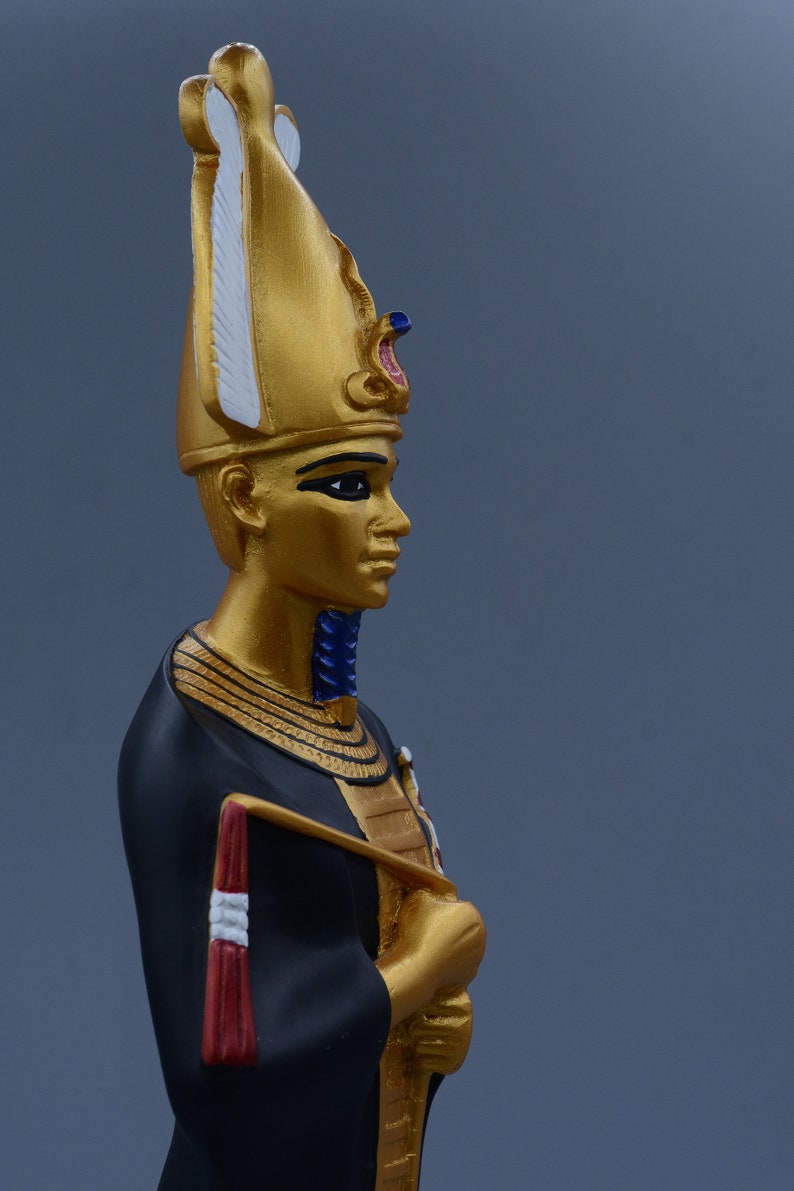
The Atef crown had the form of a white tall bulb with two ostrich feathers at its sides.
EGYPTIAN GOD OSIRIS SKIN
Pictures of Osiris the Egyptian god represented with the green skin Osiris symbol: the Atef Crown Sometimes he was instead depicted with dark skin, which remembered the dark land of the fertile banks of the Nile. The green complexion often attributed to the Egyptian god Osiris represents his regenerating powers. Let’s see in detail what are their meanings. In the introduction, we have mentioned some symbols traditionally associated with Osiris.

Also, sometimes this god is known as Osiris god of the Nile.īy extension, he was considered the granter of all the periodic cycles observed in Nature, such as the heliacal rising of Sirius and Orion every year. We have said that Osiris was the god of rebirth and regeneration.įor this reason, he was thought to possess the power to sustain life, causing the vegetation to sprout and the Nile to flood and make its banks fertile. This status of resurrection was not permanent anyway: for the rest of the story, Osiris is bound to live in the mysterious world of the dead, the Duat.įortunately, during his brief return on earth, Osiris was able to impregnate her sister and wife, the goddess Isis with their son, Horus, who would finally defeat Set restoring order in the world. the first entity who could come back from death, his body having been restored and preserved from decay thanks to the help of his brothers and the gods Thoth and Anubis.Ī representation of Osiris god of the Underworld mummified However, after that moment, the god Osiris changed and he was not the same.Īccording to the myth, therefore, Osiris was the first mummy, i.e. The version of the story most popular since the end of the New Kingdom tells that Set cut the body of Osiris into many pieces and then scattered them across Egypt.Īfter a long search, the goddess Isis and the god Nephthys managed to find the pieces anyway and, with the help of other deities as the Egyptian god of wisdom Thoth, to whom healing powers are often attributed, and Anubis, the god of embalming, they were able to resuscitate Osiris’s body. The killing of the Egyptian god Osiris is described in different manners by different authors. In any case, the importance of the Osiris myth lies not in the reason, but in the consequences of the assassination. It is not easy to know which one of them was the most accurate. Some say that Set wanted revenge for a kick Osiris had given to him, some others that Set was jealous of Osiris because of a relationship he had had with his wife, Nephthys. The reasons for the killing change from one version to another, and are often left quite indefinite. He is the legitimate king, being the heir of the dynasty originated with the creator of the Universe himself, the god Ra (or, according to other myths, the god Atum).Īt a certain point during his reign, Osiris is killed by his brother Set.

Its subject is the struggle between order and chaos, with the former prevailing over the latter.Īt the beginning of the story, Osiris rules Egypt. The Osiris myth is a highly symbolic tale. The Egyptian god Osiris is the main character in the most important myth of the ancient Egyptian religion, which is in fact called before his name.Ī representation of the Goddess Isis, the Ancient Egypt God Osiris, and the God Horus The Osiris Myth He is tightly joined to many of the other principal Egyptian deities: he is the brother of Set, Nephthys, and Isis, who he also married and with whom he generated the god of war and hunt, Horus.

The most ancient documents mentioning the Egyptian god Osiris date back to the Fifth Dynasty (about the 25 th century BC), but it is believed that his cult is actually older. This last interpretation could be explained by the god Osiris myth, according to which the body of Osiris, after having been dismembered, would have been restored by the goddess of magical healing, Isis thanks to the technique of mummification. Its meaning is quite obscure: according to some scholars it could stand for “the Mighty One”, but others think it could mean “something that is made a product”. The name of the Egyptian god “Osiris” comes from the Latin and ancient Greek version of a name which, in Egyptian hieroglyphs, appeared as “wsjr”. Other distinctive features often found in his representations are the green skin, the Atef crown, and the crook and flail. His classical iconography clearly underlines his role in the reign of the dead: he was in fact usually represented with his legs wrapped in bends, like a mummy.


 0 kommentar(er)
0 kommentar(er)
